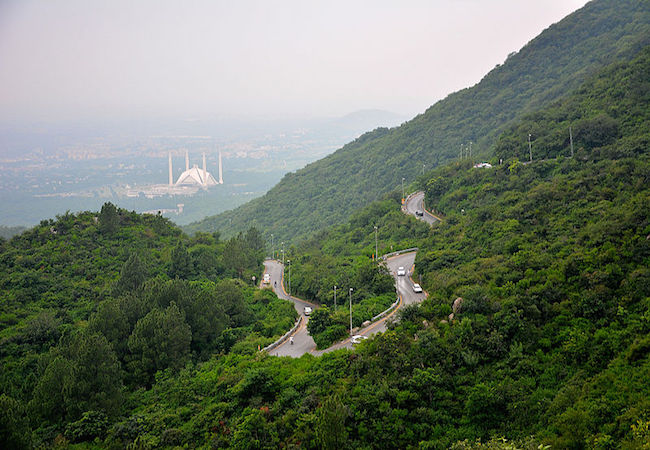The game-changing fallibility of BMD systems – Lessons from the Middle East and South Asia

As the Middle East’s major powers recalculate their defence and foreign policies following last month’s missile strikes on Saudi oilfields, there have emerged some telling lessons with regard to the changing nature of modern warfare. While these lessons are perhaps painfully obvious to the likes of Saudi Arabia who have directly been on the receiving end of these attacks, they are also evident in the near deafening introspection being undertaken by the region’s other power brokers, the United States and Israel as well. This has been made clear by the fact that even after a month since the attacks took place, there remains a definite and near ironic aspect of shock and awe to what was otherwise a quick, covert and precision strike on a highly valuable target.
What’s more, the fact that the strike took place despite the presence of one of the world’s most sophisticated missile defense systems, presents a telling example of how the technological balance in cruise missile development has shifted more in favor of offensive strikes at the expense of a once reliable defensive capability. As such, the ease and precision with which one of the world’s most closely guarded facilities were struck, shows that based on the widespread availability of current technologies, it is perhaps more reliable to count on a missile system’s offensive strike capabilities. Consequently, the opportunity cost of investing in and developing expensive missile defense shields based on this scenario becomes tremendously higher.
These lessons provide valuable strategic import to another nearby region which is also brimming with tensions amongst two extremely well equipped and militarily capable states. This refers to the South Asian region, where both India and Pakistan also seem headed towards a dangerous escalation of hostilities. As a result, both countries would do well to consider the lessons emanating from the above-mentioned Saudi experience. For instance, like Saudi Arabia, India has also been on a military spending spree over the last decade, importing some of the world’s most advanced weapons systems from across the world. Its massive economic growth has given it license to pursue a robust military modernization program that is keenly focused on enhancing its power projection capabilities. However, again like Saudi Arabia, India’s military also remains untested and risks being termed another ‘glitter force’ that is more concerned with procuring arms as a matter of prestige as opposed to operational efficacy. This for instance was clear during India’s aerial engagement with Pakistani Air Force jets in March, during which a sophisticated Israeli origin missile fired by India’s air defenses downed one of India’s own Russian made Mi-17 helicopters. Such lack of operational readiness and blind faith in untested systems is evident in both the Saudi and Indian experience highlighted above.
Specifically, regarding the US made Patriot batteries used by the Saudis and the Israeli made Spyder missiles used by India, the above incidents have shown that the efficacy and reliability of these systems in the real-time conflicts of today is quite patchy at best. If anything, any form of over-reliance on these systems runs the risk of a grave miscalculation which in effect is multiplied by the regional complexities of both their respective security environments. These miscalculations are already on display in the increasingly volatile Middle East, as the Western backed and Saudi led military alliance is just realizing. With the vulnerability of such missile defense systems now increasingly evident, there has also arguably been an element of deterrence that has been further reinforced. Consequently, the path to de-escalation appears a lot more rational than one which may escalate towards all-out war. The case of South Asia too was similar where the aerial engagement between nuclear weapons capable India and Pakistan, also ultimately reinforced the latter’s conventional deterrent while exposing gaps in the former’s much touted aerial defenses.
Yet, considering that the case of South Asia remains infinitely more precarious due to the presence of two adversarial nuclear weapons states, the above described developments pose additional yet considerably more important implications when applied to the region’s nuclear deterrence framework. In effect, they erode the belief that ballistic missile defense systems can serve as the backbone to what many a state would consider a winnable nuclear war. These primarily comprise of Nuclear Weapons States such as the US and India which in the recent past have increasingly relied on concepts such as counterforce, pre-emption and precision as key themes within their official military thinking. All under the premise that Missile defense shields offer a reliable and credible defense against an adversary’s pre-emptive or secondary nuclear strikes as part of their strategic calculus. India’s much vaunted purchase of the Russian made S-400 system presents a clear example of such a strategy.
In contrast however, the fallibility and faltering reliability of such air defence systems shows the immense dangers of adopting such an approach within scenarios that have the potential of irreversibly altering life on earth as we know it. Considering how peace and stability in the South Asian region is precariously balanced between Pakistan and India’s nuclear deterrence framework, the unreliability and increasing fallibility of missile defense systems thus warrant a serious re-evaluation of the strategic calculus of both nuclear weapons capable India and Pakistan.






